|
The high plateau end of Angoulême is one of our favourite places to wander around ... the ancient, irregular and slippery stone and cobbled streets of the old town criss-cross and offer absolutely no obvious reference points, so we two Australians have an almost 100% hit rate of getting ourselves lost on each visit. The narrow streets and alleys of the Angoulême plateau are sometimes dank, empty and a little grubby, but other times they are thriving with students and other pedestrians as the stroll around the muralled walls of the ancient lanes. The precinct offers a feast of various cuisines from around the world, served from dozens of little restaurants in this "petit coin d'Angoulême". There's our favourite creperie, Crêpes par Faim, where you can sit in the laneway, out on the back terrace or down in the vaulted basement. Or perhaps Jardin de Kashmir or Siam Gourmet if you prefer Asian cuisine, or Restaurant Le St André if you want something a little fancy ... or the newer Le Lion Rouge for an Italian meal in a fantastic architectural delight. Or walk down to Les Halles, Angoulême's indoor marketplace, for something fresh and "au comptoir". The choice is rich. In the summer of 2019 we came upon a new little book store during on one of our meanderings. Browsing through the new book shop we are drawn to the collection of books on the local Charente region. We have a number of books with beautiful photographs of the local area and its landmarks in our house. We noticed a new coffee table book (un beau-livre) on the Charente region. The book is titled "Charente", by Stéphane Charbeau and was published just the previous month (May, 2019). As usual, we first target the pages outlining the area around our little village to see if any of the local landmarks made an entry. Perhaps the beautiful church at Lichères sitting in fields of sunflowers? Or the iconic view of the château in Verteuil with its Rapunzelesque towers taken from the village bridge? Or one of the numerous neolithic dolmen stones strewn around the local countryside marking burial sites and other lost-in-time functions. The new book offered all this. And then, leafing through it, to our surprise on page 94 was a pretty outstanding photo of two fellows standing outside the abbey in Nanteuil, a village very close to ours. With backs to the camera, they were obviously studying wooden door of the 800's abbey and the local annouces on it. A closer examination revealed that it was us!!! (probably taken in the summer of 2018 or 2017). (autographs freely provided).
0 Comments
 Every French village, town and hamlet has a road-side sign that announces its name as you drive into it (and then again, as you leave it - the exception being that there is a red diagonal line through the name of the location). Over the last month or so we have been noticing many, many of these village signs have been turned upside down. A freak of nature? A nation-wide prank? Vandalism? Dysphasic sign writers? Everywhere we have been recently, we are seeing these upside down signs! Whether it be in our local Charente area, or in Deux-Sevres, Vienne, the Dordogne, or even down south where we were recently in Aude, Hérault of Gard. Well, after some investigation, it seems that this phenomena is really a quirky protest of young french farmers! According to John Lichfield of The Local (7 December 2023, [email protected]), this is part of an agricultural "rebellion of the signs" which started in the Gard in the south of France and is now spreading across the country. It is a campaign design by the French young farmers association, Jeunes Agriculteurs, around a long menu list of grievances. These consist of: 1. Farmers paying increased licence fees of 47 million euros in 2024 for pumping water from the ground and for pumping pesticides etc into it (the government has now cut this requirement); 2. A proposed EU treaty with South America that would bring cheap Brazilian and Argentinian beef into France; 3. The rising price of agricultural diesel fuel and delays in the payment of EU subsidies 4. No clear national strategy for balancing the needs of farming with an ecologically friendly future. There is a demand for greater output, but the number of farms have dramatically reduced over the last two decades (from about 750,000 to 450,000), and more than half of France's current farmers will be retiring by the end of next decade. And current farms are struggling to make any profit without the current access to government/EU subsidies. And so, this peaceful, attention-grabbing campaign has commenced to promote the grievances of young farmers - "Nous marchons sur la tête." (We are walking on our heads).
You know that feeling when you are half way to Paris on the TGV fast train in order to fly back to Australia early the next morning when you suddenly realise that your passport is snuggly tucked away in the drawer in your house in a little village in the middle of rural France?! Hmmm…… -Everything was totally under control with the preparations for closing up house smoothly completed. Hire car washed, house cleaned, linens changed, fridge emptied, heating system repaired, rubbished and recyclables bagged and placed in the street, suitcases carefully packed, fav airport hotel booked due to the early departure the next morning. Even time for a final stroll around the streets of old Angoulême and a café crême and croissant before dropping off the hire car and crossing the road to the station. We were both a little smugly self-satisfied that there was no last minute dash - as has occurred on occasions in the past.
The TGV was on time and we ensconced ourselves on board. First station - Poitiers. About one and a half hours after boarding at Angoulême, the city of Tours marked the half way mark to Paris. Less than 5 minutes before stopping at Tours, for some reason I sensed something was wrong, plus the need to check for my passport. Immediately I realised that my passport was still safely in the house in Verteuil…… oops. Don said I suddenly turned very pale, which is probably fairly accurate as I couldn’t believe how I could have neglected to think about ensuring I had my key to travelling home .... I had no idea how this was going to turn out. The train stopped and I jumped off the train with my suitcase, but without a firm plan on how I was going to get back to Angoulême, and then Verteuil, and then back to the CDG airport in Paris by early the next morning. It was three pm and already it was flashing across my mind that there weren’t many options. Wrestling with my heavy suitcase out of the Tours station, I looked for an Avis car rental office across the road, with a view to potentially driving back to Verteuil and then retracing my steps and then onto Paris and the airport. I entered, and was firmly told “no cars monsieur, impossible”. Next option, quickly back to the station to check out the train schedule back to Angoulême and it was fortunate that one was arriving in about 15 minutes. Grabbed a ticket and by 3.20, not believing my luck that a TGV was heading in the right direction, was on a train back to Angoulême, a couple of hundred kilometres away but still with no concrete plan about what to do when I got back there. Using the wifi I managed to find out that the only train back to Paris that day was at 5.36pm and I still had to work out how to get the passport in Verteuil, which is about 35 km from Angoulême. We have friends in a neighbouring village to us and I was able to contact Maria on messenger - she agreed to drop everything, and along with Björn, drive to Verteuil to collect my passport and then drive down to Angoulême to deliver my passport to me. What a relief to have such good friends who were willing to help me get out of a pretty awful predicament! So I arrived back in Angoulême, Maria and Björn did the passport drop, and I procured a ticket and seat on the day’s last TGV to Paris - all in about a thirty minute turnaround. So fortunate that the train schedules were working in my favour today, and so grateful for amazing friends such as Maria and Björn. Don has firmly said that from now on, he will be taking on passport duty. At least he’ll have the pleasure of my company on the flight tomorrow morning! The city of Angoulême is a mid-sized regional city in the French department of Charente, situated on the Charente River, just east of Bordeaux and about 3 hours south of Paris by TGV. We are familiar with Angoulême as it is the closest regional city to our little house in Verteuil - it is the step-off point after a long flight from Australia to Charles de Gaulle and the subsequent TGV train south to Angoulême. We typically collect our rental car from here during our stays. While not typically on the tourist path, it is a typical "working" French town, with an old town perched high up on a plateau overlooking a meander of the river Charente and surrounded by the remains of stone ramparts. The city is apparently nicknamed the "balcony of the southwest" and has a population a little less than 42,000 but it is the centre of an urban area of 110,000 people extending into the surrounding areas. Angoulême has a long history, extending to neolithic times. More recently, it was linked into the network of roman roads by the end of the Roman Empire. In the 800's the Vikings travelled up the Charente river and attacked the town. In the 1200s the Jewish community was attached by crusaders. In 1360, during the Hundred Years War, the town passed into the hands of the English. The English were expelled in 1373 by the troops of Charles V. In WWII, Angoulême was located in the occupied zone under German authority. The border with the free zone passed about 20 kilometres east of Angoulême, splitting the Charente department in two.
Angouleme is also well known for its collection of colourful wall frescos, or murales, painted onto building walls across the city and some of its inner suburban areas. In July, we followed a self-guided walk that explores these murales. You can follow the "hard-copy map from the Tourism Office, or download the app "Murs bd Angoulême". One of our favourite past times in Angoulême is to wander the old town and its seemingly haphazard, rickety old paved streets. We always seem to get lost. There are plenty of lovely shops and restaurants - including our favourite creperie. Walking along the old ramparts around the old town also allows for lovely views out over the Charentais department.
A young Australian guy moved to Europe and eventually to Paris where he has now lived for five years. Two or three years ago he started up a podcast which I happened to stumble across, and have been following since. He married a Swedish girl, and for their honeymoon, they both hopped on his red scooter and "scootered" around France in the shape of a heart at the top speed of 50km/hr. Oliver and Lina spent a week in Verteuil, and subsequently received a mention in his book that he has just published, "Paris on Air - a memoir", by Oliver Gee.
"I really, really enjoyed this book! Oliver Gee’s first book is a refreshing, romping read of his first five years living in Paris. It’s a love story – falling in love with this city, his new podcast, the lovely Lina, and of course, the Alp Slayer (affectionately known as the Red Beast).
This is the perfect book for every wannabe Parisian, one of the best of its genre that I’ve read. By the time I turned the final page, I felt that I had been educated (I now know what the dot in the letter “i” is called), I learnt a couple of French words I truly hope never to use (for example, défenestrer), empathised with Oliver on some truly awful French lessons he experienced during his early times in Paris, and relived some of his lovely and zany podcast episodes from the last couple of years. Oliver brings Paris and France to life through his words and experiences – I didn’t want the pages to end. Five stars for a truly delightful, well written book that I am sure I will pick up again and again over the years". Saying "Bonjour" more than once a day to the same person is not particularly polite!
Something new I learnt a little while back is that once you greet someone with "bonjour", you shouldn't repeat this greeting again to the same person during the day. It can be considered to be rude. If you say "bonjour" again, it gives the impression that you haven't yet seen them that day, or that you don’t remember saying it before, or worse, took no notice when you greeted them earlier. It's like saying "nice to meet you" to someone in the morning, and then you run into them again during the day and say again "nice to meet you". So if you say "bonjour" again, the person may look at you in a funny way and say something like: “on s’est déjà salués” (we already greeted each other). Instead of saying bonjour several times, the second greeting can be something along the lines of "re-bonjour!" or something nice like: "ça va depuis tout à l’heure"? (all good since earlier?). Or just "ça va"? I go for the latter as it avoids the difficult french "r" sound in "re-bonjour"!! or just a simple acknowledgement, smile and wave..... Going to a grocery store is always a buzz in another country, and France is no different. Lots of different products, choice, and variations on a theme when compared to products available at home in Australia. Whether it be E.Leclerc, Intermarché, Géant Casino, Carrefour, Super-U, Auchan or Lidl, it is always an enjoyable and stimulating experience. Grocery shopping is one of our enjoyable outings in France- is that sad? A mini cultural experience. There are quite a few differences to the chains found in Australia. So what are some of them? What are the traps for new learners? How to avoid embarrassment? What to be aware of? Here are some tips that, from experience, might be useful ..... And then there is this great spread called “Speculoos”, a cinnamon-y taste, which is a spread form of a biscuit they have over here, one often served with coffee. It is great on hot toasted slices of bread! However, you won’t find any vegemite on the shelves here. 3. Fresh milk seems to be a rarity in France. Lovers of "long life" milk are well catered for, but if you want fresh milk, come early before it runs out. In a huge store, there may only be a very small cabinet devoted to fresh containers of milk. 4. There are different arrangements for buying fresh fruit and vegetables at different stores. Sometimes there is an arrangement where you have to have your fruit and veges weighed first and priced to take it to the check-out. Other times, you need to put the co-inciding number of the product (that is displayed) into the self serve scales and put the ticket on the plastic bag before going to the check out. It can be embarrassing to get to the check out and you don’t have the price of the fruit on the bag! Creates a hold up in the queue if you have to run back to the fruit and vege section to get your purchase weighed and priced. This only happens once! The hint here is to just watch the other customers. 5. Over here, fresh chickens and other poultry tend to have a yellowish tinge to their skin… What the?! 6. France is fond of cheques. For whatever reason, cheques remain a very popular mode of paying for goods. While unheard of in Australia, in France we often pay by cheque in grocery stores. Every second or third person at the cassier at our local grocery store seems to pay by cheque. Logistically, all it requires is a signature, the cash register does the rest. 7. Be prepared to take your time. There are often queues for the check out, and even when there isn’t, it is not unusual for the check-out operator to have a casual, friendly conversation with every person in the queue before you. We have found this unhurried approach to service a challenge to get habituated to, but eventually it becomes quite pleasant, quirky custom. 8. Rug up when you go grocery shopping. Our experience is that the grocery stores here can be freezing! 10. Plastic bags are out in France. A great, progressive move. Remember to take a shopping bag/s with you when you go to grocery shop. Places like Le Clerc, Super U and Intermarché do not supply them. If you do not have any with you, you can buy them at the check out counter. Some bags are actually quite nice, often have a design related to the local area, and make inexpensive, light-weight gifts for those at home. 11. Opening hours. Always a little confusing as they vary according to the retailer and to the time of the year (and then there is always the “fermature exceptionelle” when places seem to close just for the heck of it).
12. Always announce your turn at the check out with a friendly “bonjour” (or “bonsoir” if after about 18.00), and on leaving, a “merci, bonne journée (or bonne soirée), au revoir” is the norm. 13. Bring a 50c or 1 euro coin to access the shopping trolley!
I saw the gendarmerie car waiting, ready to pounce, and as I drove on they started to follow me and then turn their lights on. “This is going to be interesting”, I thought. I pulled over and they stopped beside me and asked me to follow them, “suivez-nous”. I followed them to the car park of M. Bricolage and the two police men came over. They asked if I knew why they had stopped me. I responded that I thought so, “Je pense que oui”. They asked for my driver’s license, insurance papers and some “green” papers of which I had no idea what they were. Even before I handed over my Australian driver’s license they knew I was not of these parts from my harsh French accent and simplistic and straight-forward responses to their queries. “Is this your car”? “It is a hire car”. This is where I did a lot of scrummaging through the glove box, and thrust whatever papers I could find in there at them. “Where do you live”? “Here, or in Australia?? “Here”. “Verteuil, but just for three weeks”. “What are you doing here”? “I am on holidays”. They walked away and had a chat together. The younger one returned, gave me my licence back, and said I could go – “Allez-y!”. I think I was too hard for them. Anyway, they had the desired effect – I will be coming to a complete stop at “stop” signs in the future – good proportionate enforcement on their part. Last week we had our first interaction with the French police. My daughter, Bronte, had her mobile phone stolen while we were in the old town of Strasbourg, in eastern France. Fifteen seconds inattention on our part while swapping phones to take some photos, and it was gone. To cut a long story short, when we realized it wasn’t going to turn up, we approached one of the multiple teams of police who were ever-present, patrolling the area, always in groups of four, with automatic weapons, always foreign and unsettling for us. They suggested making a report at the police station and gave us directions how to get there by tram. Off we went and eventually found the Hôtel de Police.
At the Hôtel de Police, visitors had to wait outside in the winter cold and were brought into the foyer one-by-one to have their pockets emptied, bags checked and then patted down. Then we had to tell our story at the front desk, before being asked to sit in the waiting area. Eventually, we were taken into an interview room where we spoke to a young police woman, from Paris, new to Strasbourg. She was very polite, rattled off a series of questions, and everything was keyed into her computer. There seemed to be a lot of typing going on for the minimal amount of input we were giving. At the end of the 25 minute session, we were given a copy of a multi-page statement/report, each page signed by Bronte. It will be interesting to see what we have to go through with the insurance company once we return to Australia and how they deal with police reports in non-English languages. Overall, I couldn’t complain about the interactions with the French police on these occasions – serious but polite and courteous, reasonable, helpful. Time to publish this blog. I started writing this last year, in July, after completing a little road trip to the south of the Charente, Dordogne, completed by a little foray into the Aveyron. Two nights away, based in the town of Sarlat - what a great slice of France to witness and enjoy! Highly recommended, five stars!!
across three days - it was a breeze (we could easily do that in one day in Australia to get to and from towns, so this was a dream)! On Friday we decided to leave Verteuil in the northern part of the Charente département and explore areas to the south and east. It was a time to revisit some of our favourite places that we have previously visited - a time to consolidate in our memory these sights prior to adventuring into the many other unknown and unfamiliar parts of France. Verteuil-sur-Charente to Aubeterre-sur-Dronne (91km, 1hr 11min) Just 50 km south of Angoulême is Aubeterre-sur-Dronne. Famous for its ancient subterranean church, it is a lovely village to wander around and to look through the shops. Owner of the "Plus Beaux Villages de France" brand since 1993 and the label "Petites Cités de Caractère" since 2012, the village has welcomed pilgrims and visitors for more than a thousand years. We picked up two small jars of confit de pineau to try, thinking that if it tasted good, we would gladly add it to our obsession with confiture de lait, another spread, similar to condensed milk that had been recommended to us over here. Aubeterre-sur-Dronne joins the many villages in this part of France that are on a route of the Chemin de St Jaques as the pilgrimage paths wander their ways down through France to funnel into northern Spain through the Pyrénées, on the journey to Santiago de Compostela in north-west Spain. Pilgrim signs marked various walls of village houses. The centuries-old pilgrimage was to become a common theme over the next couple of days. Aubeterre-sur-Dronne to Brantôme (56km, 52min) Another 50 km to the east is Brantôme, a beautiful riverside village on the Dronne river in the north of the department of the Dordogne. Brantôme is always on our list of places to visit and we have been here 4 or 5 times - it never fails to impress. The town has a beautiful mixture of medieval and renaissance architecture to admire. The Benedictine abbey on the banks of the river is superb and the old stone bridge and the beautiful mill have been transformed into a hotel and restaurant. The abbey was originally built by Charlemagne in 769 and there is a troglodytic section behind the abbey built into the cliffs. We managed to make a reservation at the restaurant, Le Moulin de L'Abbeye, which unbeknown to us, earnt a Michelin star in February this year. A great way to celebrate the birthdays of two in our group. We enjoyed a great meal on the mill terrace with attentive service and food that was a visual treat, all the while watching the ducks and ducklings on the river and the canoes riding down the shuttes of the weir, on their way down the river. Brantôme to Périgueux (24km, 26 min) A short drive south to Périgueux. We have only ever driven through this city on the way to the Dordogne valley. Don has always wanted to stop off at the imposing cathredal that can be seen on the skyline. We braved peak hour traffic to find a spot to park and have a look at the Saint Front cathedral. This regional centre promises to be a future destination in itself - lots of roman ruins and a great looking old city centre. Périgueux to Sarlat (70km, 1hr 10min) Sarlat-la-Canéda is a must-visit town. The market town of Sarlat is reknown for its foie gras - you'll see images of ducks and geese everywhere! It's a special, lovely old town, and the spring-board for one of the "special" regions of France - the Dordogne valley. It has been relatively untouched in recent centuries and as a result, Sarlat has remained preserved and one of the towns most representative of 14th century France. Try to arrange your visit to include Saturday, as it has a fantastic market on Saturdays mornings. From Sarlat it is easy to visit Les Eyzies and visit the National Prehistoric Museum. The local area is sprinkled with caves with evidence of their prehistoric dwellers. Lascaux offers cave paintings over 17 000 years old! The highight is a drive along the Dordogne river visiting some of the cliff top châteaux of Beynac et Cazenac, Castelnaud and La Rocque to name a few. An absolute must. Sarlat to Domme (return trip 12km, 18 min each way) Domme is well worth a visit and offers beautiful views up and down the Dordogne valley and river. It lies high on a rocky outcrop overlooking the Dordogne river and is a bastide, or fortified medieval town. Today, Domme is a member of the association Les Plus Beaux Villages de France ("The Most Beautiful Villages of France"). Domme was founded in 1281 and has a turbulent history. In 1307, the Knight Templars were imprisoned in Domme during the trial against them. During the Hundred Years' War, the bastide was coveted by the English who first took the town in 1347 and repeatedly changed rulers throughout the war until 1437 when it finally fell under French rule again. The Wars of Religion brought new turmoil. Protestants took the city in 1588 by climbing the cliffs at night to open the gates. Apparently this was a short success, as the Protestants handed the bastide back to the Catholics in 1592. Domme is a great town to wander around, take in the views and do some shopping. Sarlat to Conques (131km, 2hrs 11min) We were first motivated to visit Conques in 2014 after seeing some beautiful photos of the village in a cook book we have at home - A Food Lovers' Pilgrimage to Santiago de Compostela. We were spending a week R and R in the south after our 780km walk along the camino and took the opportunity to visit while driving back to Verteuil. A further incentive was that it was a well known pilgrim stop-over for those travelling along one of the French pilgrim routes on their way south west toward Spain. After our visit, we were hooked! The village built on a hillside and has classic narrow medieval streets. As a result, large vehicles such as buses cannot enter the historic town centre but must park outside. Consequently, most day visitors enter on foot. The town was largely passed by in the nineteenth century due to its location. As a result, the historic core of the town has very little construction dating from between 1800 and 1950, leaving the medieval structures remarkably intact. It has a woderful charm and is in an idyllic location, buried in the mountains of the Aveyron. The Abbey Church of Saint Foy in Conques was a popular stop for pilgrims on the camino de Santiago. The main draw for medieval pilgrims at Conques were the remains of Saint Faith ("St. Foy"), a martyred young woman from the fourth century. The original monastery building at Conques was an eighth-century oratory built by monks fleeing the Saracens in Spain. The relics of St. Foy were brought to Conques in the 11th century and caused the pilgrimage route to shift from Agen to Conques. The Abbey Church of Saint Foy was added to the UNESCO World Heritage Sites in 1998, as part of the World Heritage Sites of the Routes of Santiago de Compostela in France. Conques to Rocamadour (89km, 1hr 35min) Flights of steps ascend from the lower town to the churches, a group of massive buildings half-way up the cliff. The chief of them is the pilgrimage church of Notre Dame, containing a wooden Black Madonna reputed to have been carved by Saint Amator (Amadour).
 In Australia there are regional variations to the language and words that we use. For example, in Queensland we say "togs", however in NSW they are usually called "swimmers", and in more southern and western parts of Australia, they are termed "bathers" (of course they are ubiquitously known as "budgie smugglers across Australia!). Togs are not alone. A "car boot" is called other things in various parts of Australia (e.g. trunk), as is "port" (e.g. bag, suitcase, case etc), and many others (potato scallop, drinking fountain, sausage sizzle, rubbish bin, etc. PhD theses have been written on the issue of regional variations of lexical usage and there are "word maps" readily available on-line!
The national results are in .... This survey of over 110,000 people to date has found that 59.77% of respondants would say pain au chocolat, with 40.22% going for chocolatine. The results reveal that "chocolatine" voters are hugely congregated in the south west of the country. And in Verteuil? The problem I have is that Verteuil is in situated on the cusp, on the vague demarcation line between the south west region and the rest of the country - in the "chocolatine - pain au chocolat hot zone". There are 1441 respondants to the abovementioned survey to date in the departement of Charente. 90% indicated that they use the term "chocolatine". However, interestingly, it seems that our little village of Verteuil bucks the trend. |
|



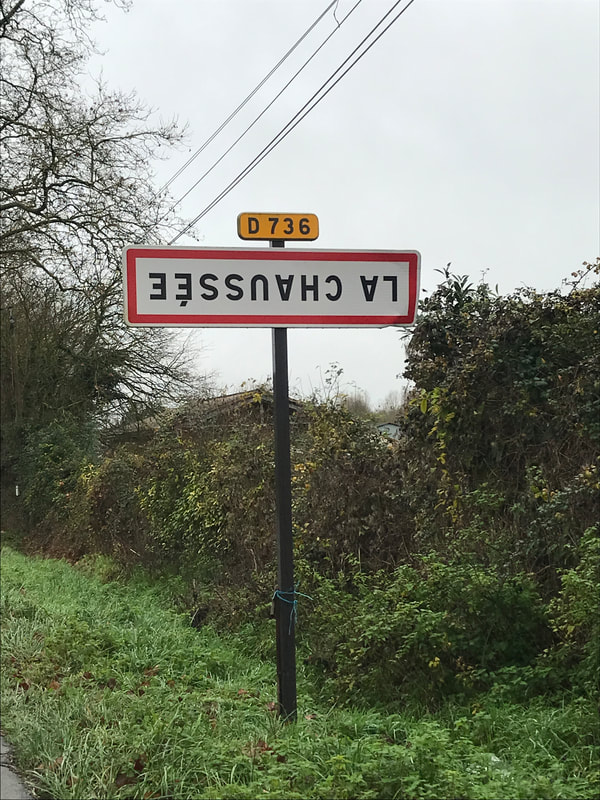













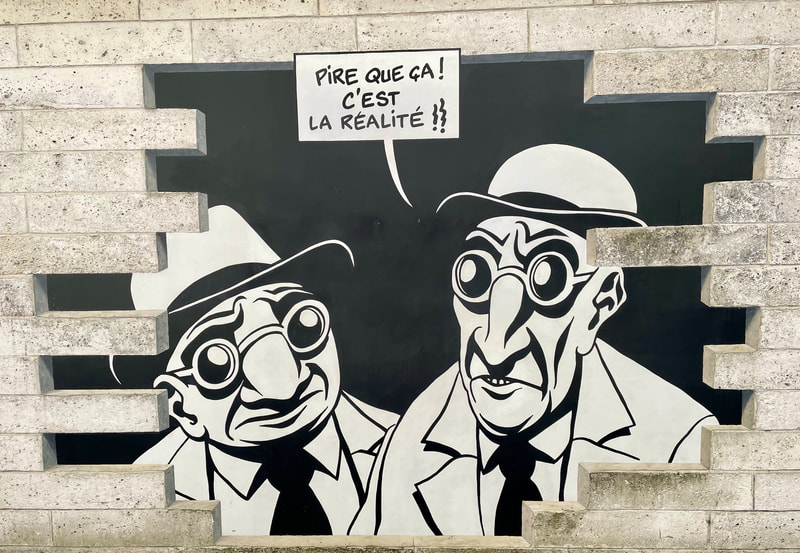




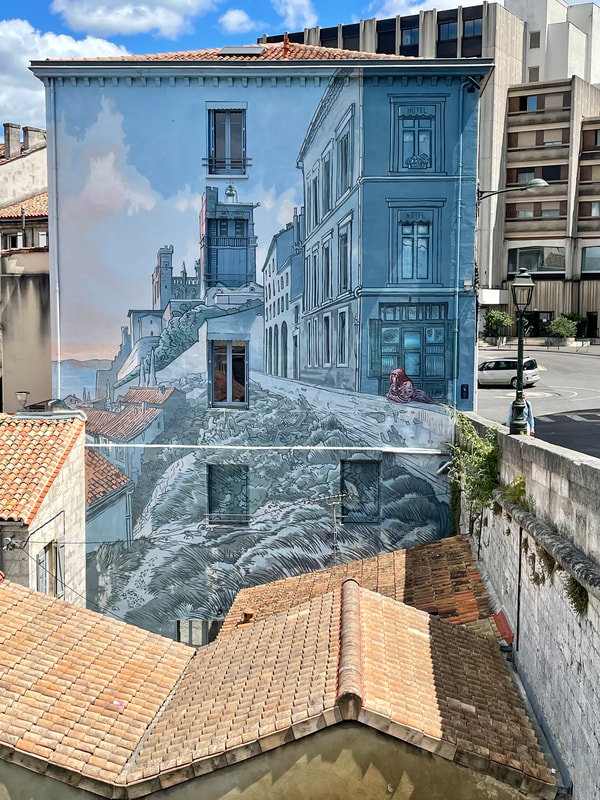


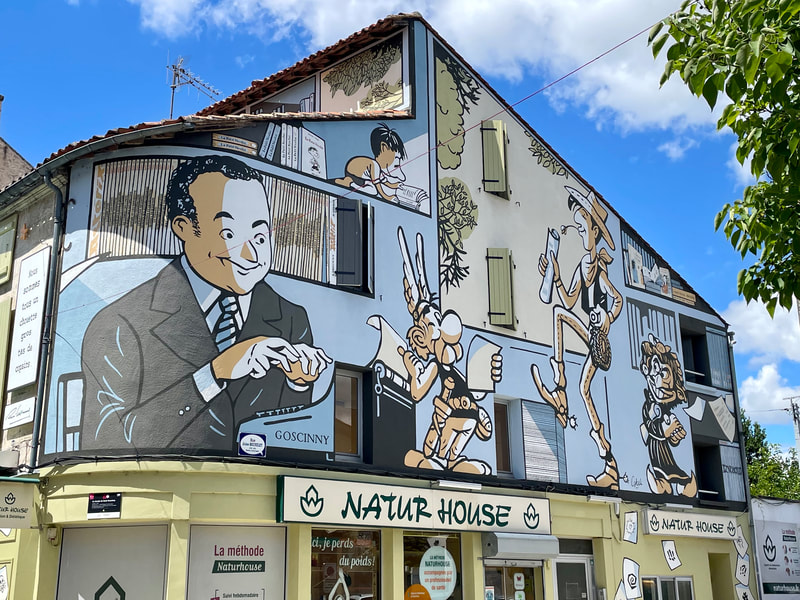





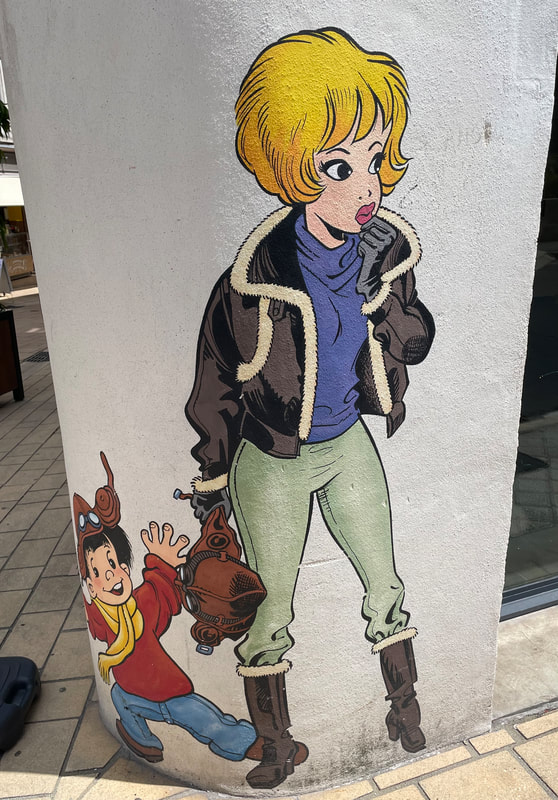










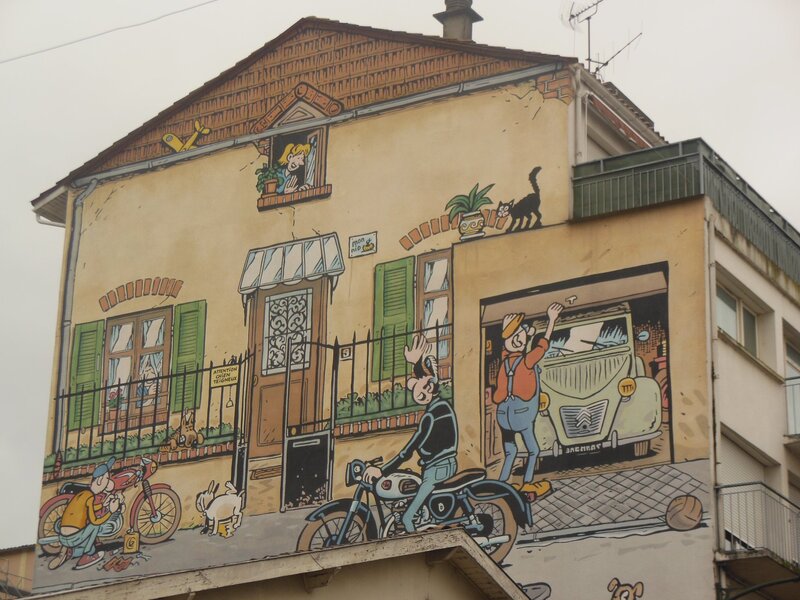
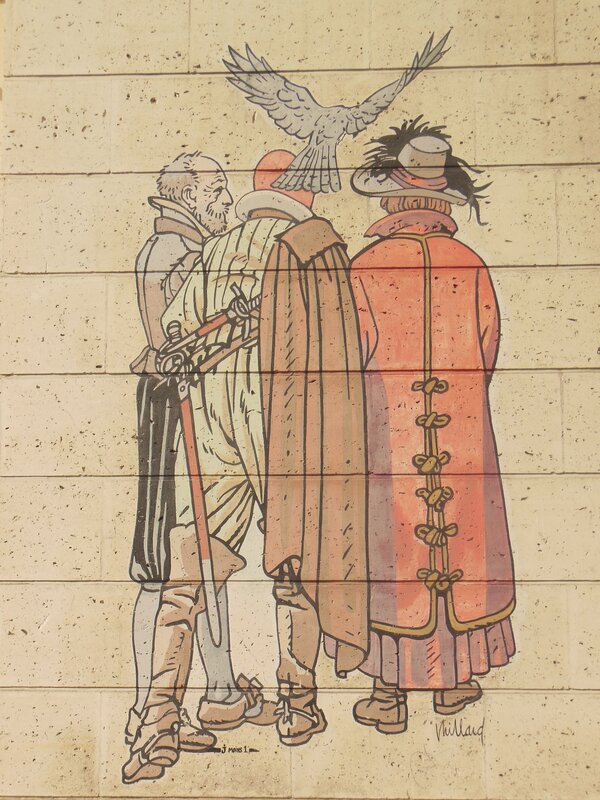
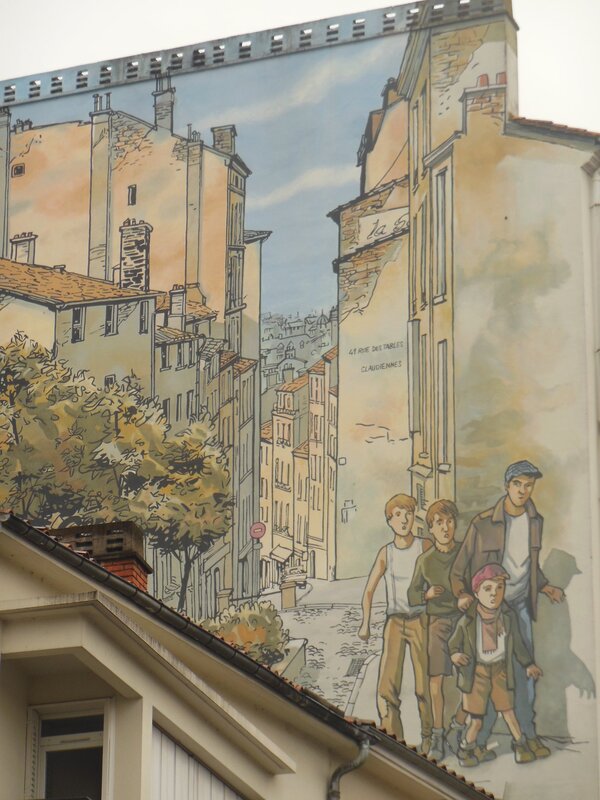


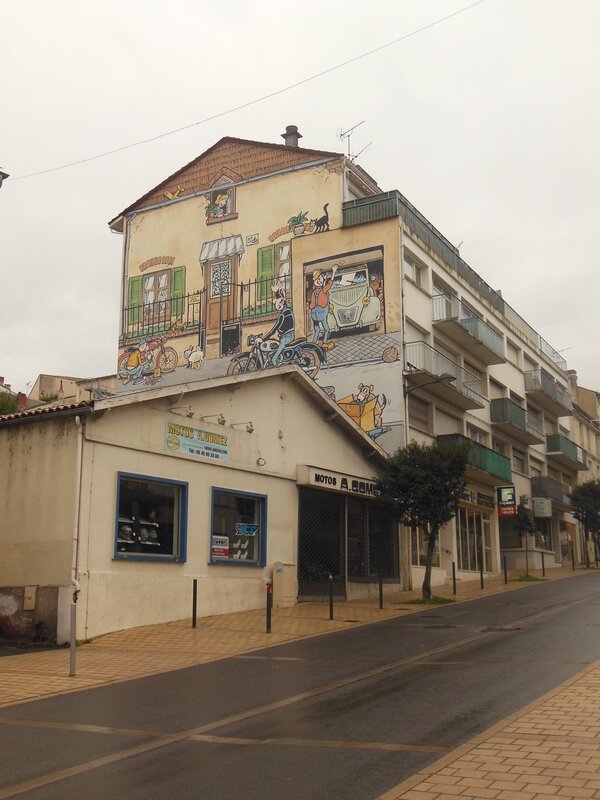

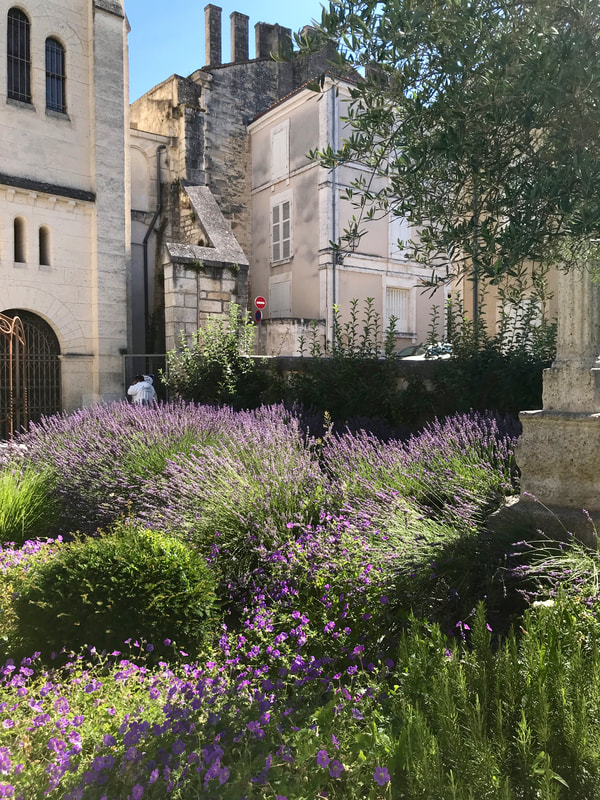



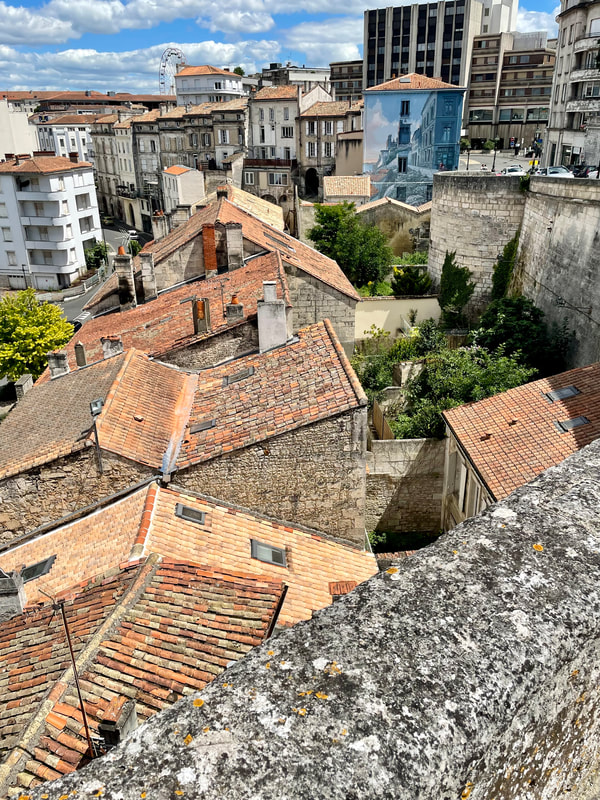
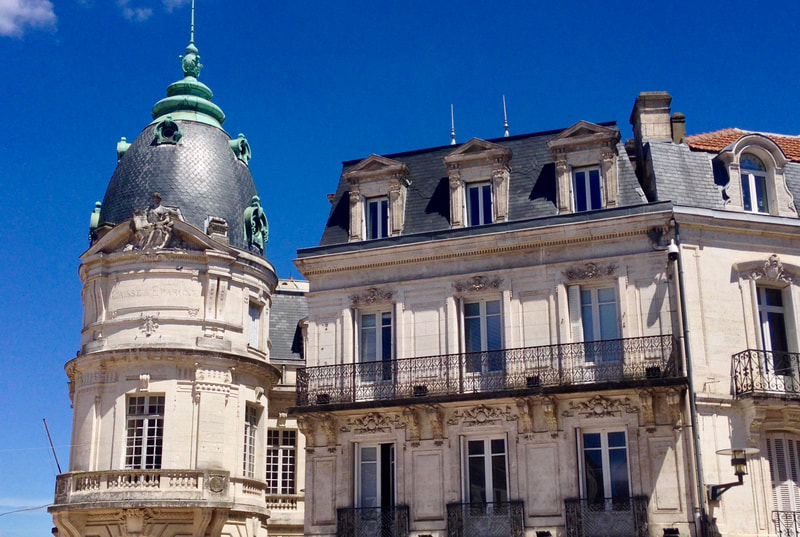



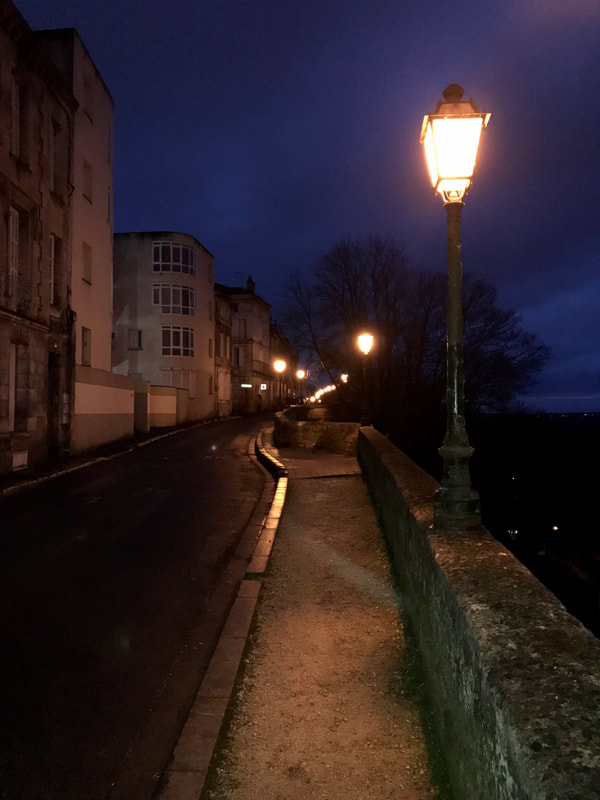



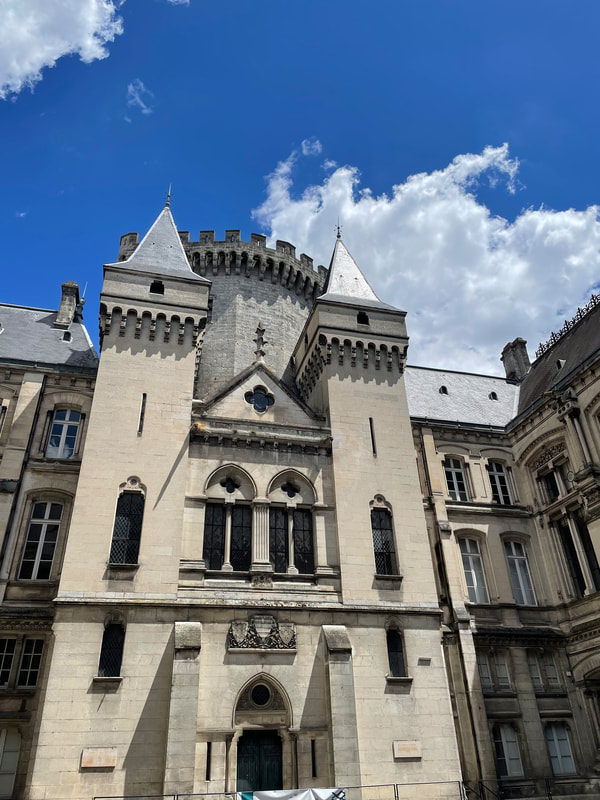



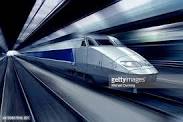
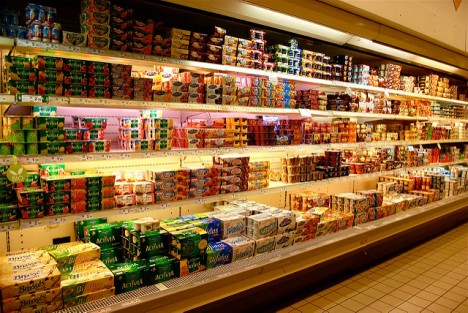

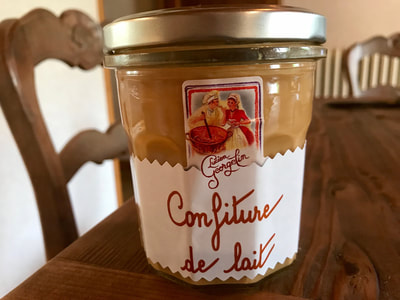

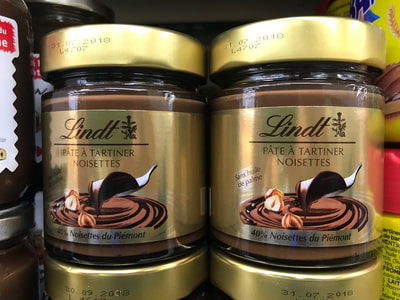















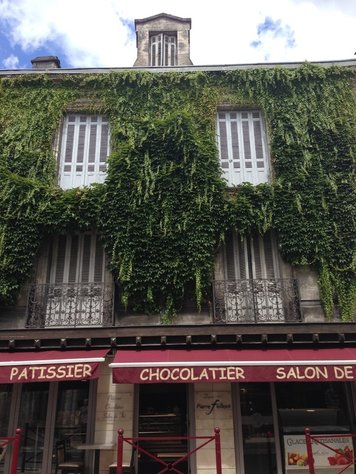











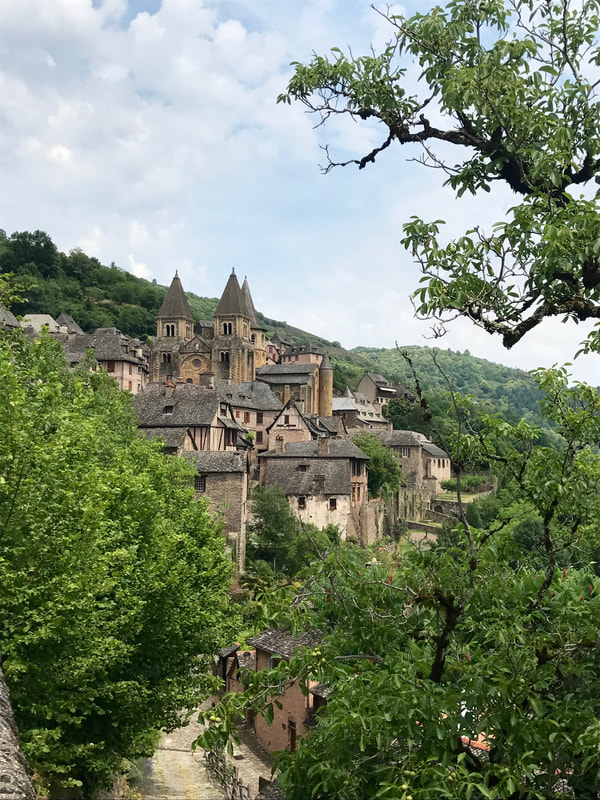





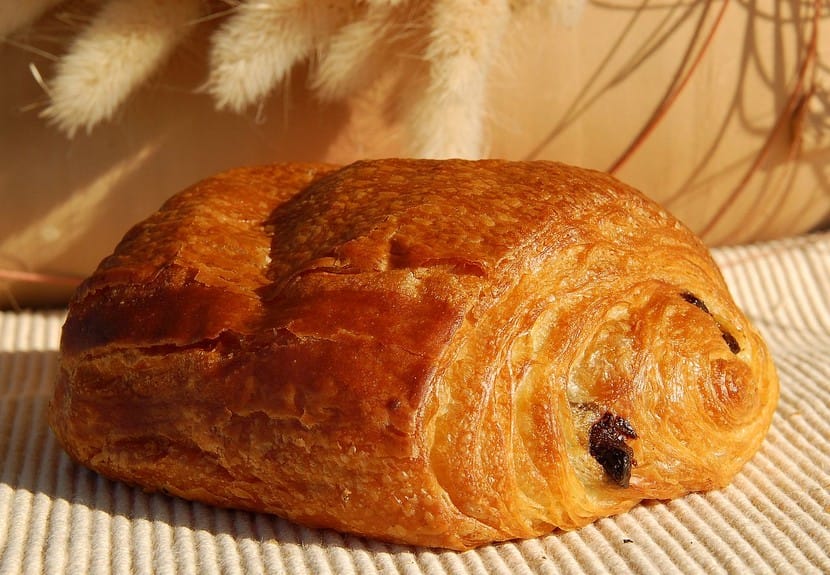



 RSS Feed
RSS Feed